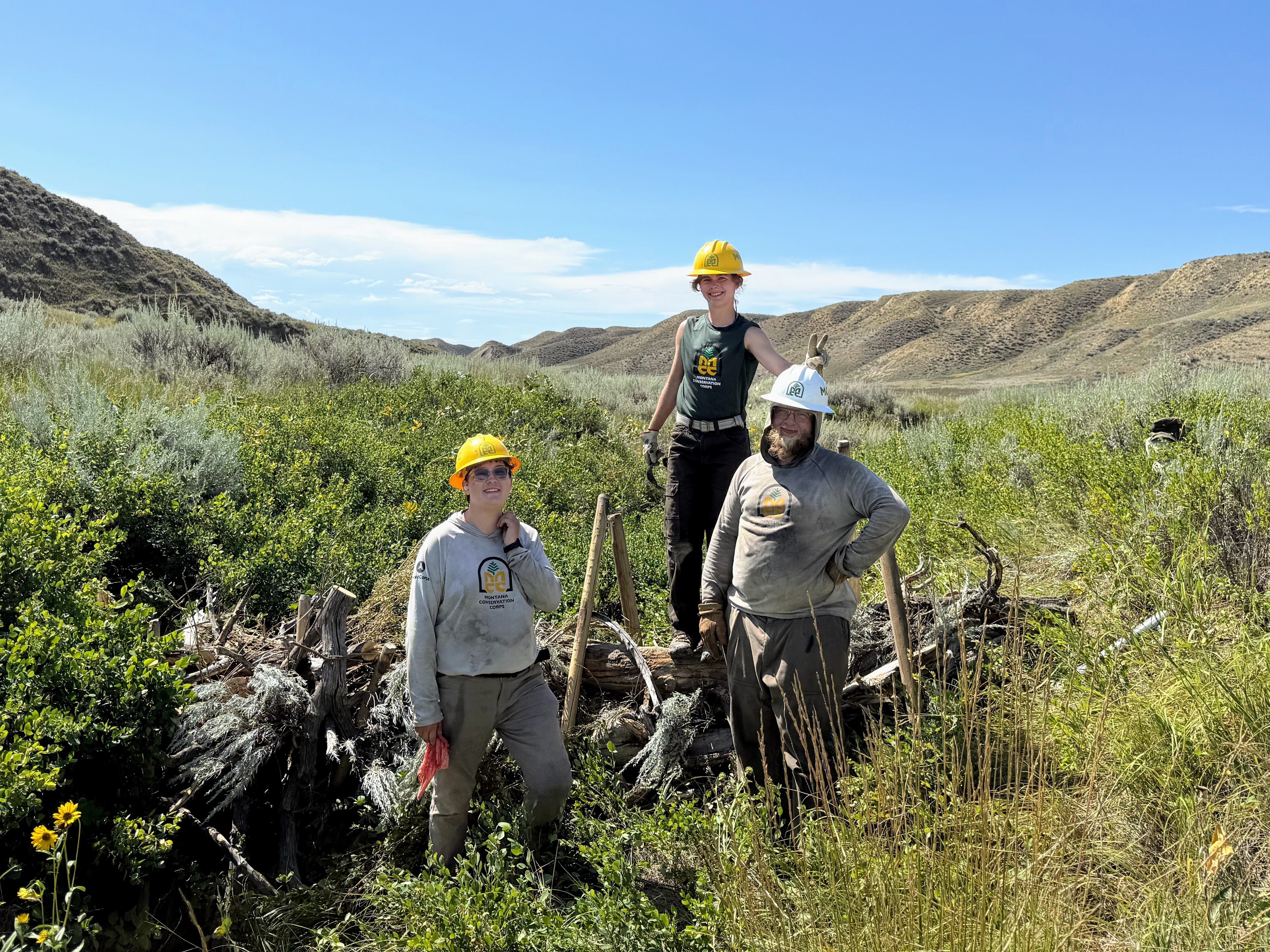
Beavers evolved to build dams as a defense mechanism. Since beavers are more agile in water than on land, they build dams to raise the water level of their habitats high enough for safe travel to food sources, building materials, and their lodges. But you might be wondering – what does this have to do with MCC, conservation, and connecting young people to the land?
As a member of an MCC Mesic Restoration Crew, frequently called the “Beaver Crew,” I often think about why and how beavers build dams. Our crew builds Beaver Dam Analogs (BDAs), human-made structures designed to mimic beaver dams and their environmental benefits. As it turns out, beaver dams don’t just keep beavers safe from predators; they mitigate drought and flood, improve water quality, recharge groundwater, extend seasonal water flows, support biodiversity, sequester carbon, and reduce summer water temperatures. By building BDAs, we hope to bring these benefits back to streams across Montana's Northern Great Plains.
Before my term with MCC, I had no experience with the Northern Great Plains region. The prairie can be unforgivingly hot, buggy, and vast. Yet, I am consistently blown away by the region's undeniable beauty. Sleeping under unobstructed starry skies, seeing its expansive sunsets and sunrises, witnessing the grace of its wildlife, feeling the power of its storms, or experiencing the kindness of its people, I am immensely grateful that I have been able to spend the last few months living and working on the prairie with MCC.
I’m captivated by the Montana prairie’s rich history. Before Gore-Tex and puffer jackets, beaver coats and hats were thought of as some of the finest clothing money could buy. As beavers were hunted to extinction in Europe and Asia, thousands of young “mountain men” traveled to the American West in search of beaver. Mass beaver trapping in Montana lasted only a few decades and led to severe declines in beaver populations by the 1850s. While populations have rebounded, beavers are still absent from many water systems that could benefit from their presence.
That’s why I find it powerful that MCC crews are now imitating beaver activity in many of the same creeks and rivers that were once the targets of trapping brigades. Our work with BDAs and the broader umbrella of Low-Tech Process-Based Restoration (LTPBR) techniques represents a fundamental shift in the way humans’ relationship with beavers has shifted over time: from exploitation to collaboration.
LTPBR is rooted in principles that encourage natural processes that let “the stream do the work,” and promote the complexity required for resilient water systems. After six hitches, I can say this: LTPBR works. I have seen our structures' impressive ability to hold back water, raise stream beds, encourage vegetation on stream banks, and create resilient streams. Some projects aim to create habitat for beaver return, while others support healthy grasses for cattle ranching. Both of these objectives are important; we need agriculture and livestock, just as we need healthy ecosystems and wildlife populations.
In understanding and promoting the benefits of beaver activity, MCC and its project partners - including ranchers, community nonprofits, national conservation groups, and state and federal agencies - are helping to write a new chapter in the evolving history of beavers in the Montana Plains. This chapter will take a lot of hard work, passionate individuals, coordination between stakeholders, and lots of sod, but it has the chance to make a massive impact on the conservation of prairie ecosystems. And, by offering entry-level LTPBR roles, MCC is helping to pave the way for a new generation of restoration professionals who understand and can implement cost-effective solutions for degraded streams. This work is a highlight in the history of beavers in the Montana Plains, and I am thrilled to play a part through my service with MCC.

![[Image Description: Two MCC members are walking away on a rocky trail, carrying their packs, surrounded by burnt orange bushes. Through the haze in the background, there are a multitude of mountains, overlapping one another.]](https://cdn.firespring.com/images/7ba12407-5e3a-41c1-b4b4-f00aac9d37a1.jpg)




